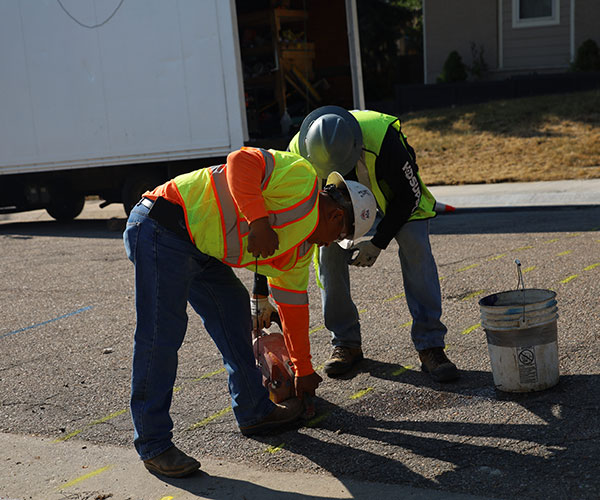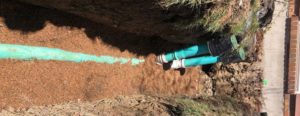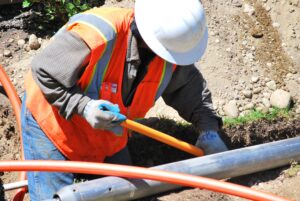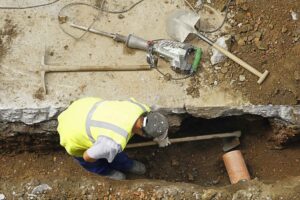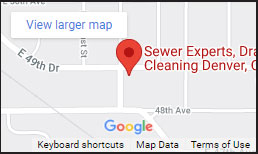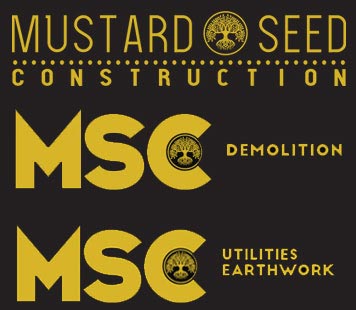Introduction
Do you need to find sewer line pipes on your property? Most homeowners face this challenge at some point. You might need to find your sewer line for repairs. Or you may want to plan landscaping work. Either way, knowing how to find sewer line locations saves time and money.
So, locating your sewer cleanout is the first step. But many people don’t know where to start. The good news? You can find sewer line pipes yourself. Plus, we’ll show you when to call a sewer line location service.
This guide helps Denver homeowners find their sewer lines. We cover simple methods you can try first. Then we explain when professional help makes sense. After reading this, you’ll know exactly how to find sewer line pipes on your property. You’ll also learn how to avoid costly damage to underground utilities.
Table of Contents
- How to Find Sewer Line Cleanout Access Points
- Locating Sewer Cleanout: Indoor vs Outdoor Methods
- Find Sewer Line in Yard Using Property Records
- Professional Sewer Line Location Service Options
- Tools to Help You Find Sewer Line Pipes Safely
How to Find Sewer Line Cleanout Access Points
Your sewer cleanout is your best starting point. This access point shows where your sewer line begins. Most homes have at least one cleanout. So, finding it first makes the rest easier.
Look for a round or square cap first. These caps are usually white or black. The cap sits on a short pipe. This pipe sticks up from the ground. It’s often near your home’s foundation.
Check your basement or crawl space next. Many older homes have indoor cleanouts. Look along the walls near floor drains. The cleanout might be in a concrete floor. Also, check utility rooms and laundry areas.
Common Sewer Cleanout Locations
Now let’s check the most common spots. First, walk around your home’s perimeter. Look within 5-10 feet of the foundation. The sewer cleanout is often on the street-facing side. This makes sense because sewer lines run to the street.
But some homes differ from this pattern. Then you might find your sewer cleanout in the back yard. Older properties sometimes have unusual layouts. So, check all sides of your house carefully.
The cleanout cap usually has a square fitting. This fitting lets you open the cap. Some caps say “sewer” or “cleanout” on top. If you find this, you’ve found your starting point.
Expert Insight from Marisa Beaver, Sewerex Owner: Most Denver homes built after 1980 have exterior cleanouts. But older properties may only have indoor access. When you can’t locate your sewer cleanout, we use camera equipment. This helps us map the entire line path.
Locating Sewer Cleanout: Indoor vs Outdoor Methods
Indoor and outdoor searches need different approaches. So, let’s cover both methods. This helps you find sewer line access fast.
For indoor searches, start in the basement. Look for a white or black pipe cap near the floor. The pipe usually measures 3-4 inches across. Also, check behind storage or furniture. Homeowners often hide cleanouts accidentally.
Outdoor searches take more effort. But they often succeed when indoor searches fail. Walk your property in a grid pattern. Look for small pipes sticking up. These pipes are usually 6-12 inches tall. They have caps on top.
Steps for Finding Underground Sewer Lines
First, check your property survey. This document shows utility locations. You received it when buying your home. If you can’t find it, contact your county office. They keep records of all property surveys.
Next, mark any visible cleanouts you find. Use flags or spray paint. This creates a starting point. Then you can trace the line path. The sewer line runs from your cleanout. It goes toward the street in most cases.
Also, look for clues in your landscaping. Sewer lines often show up as sunken areas. Or you might see a line of greener grass. This happens because the pipe provides moisture. Dead grass patches can signal problems though.
Use a metal detector if needed. This tool finds metal pipes underground. Most older sewer lines contain some metal. Run the detector in straight lines. Work from your house toward the street. Mark any signals you get.
Pro Tip: Call 811 before any digging. This free service marks all underground utilities. It prevents damage to gas, electric, and water lines.
Find Sewer Line in Yard Using Property Records
Property records help you find sewer line locations accurately. These documents show where builders installed pipes. So, getting your records saves guesswork.
Start with your home’s original blueprints. These plans show all utility placements. Contact your builder if you have them. Or check with your local building department. They keep copies of all permitted work.
Your property’s plat map also helps. This map shows lot boundaries and easements. It marks where utilities enter your property. Most county offices provide these maps. Some are available online now.
Using As-Built Drawings to Locate Pipes
As-built drawings are the most accurate records. These show exactly where workers installed pipes. They include depth measurements too. So, you can find sewer line pipes precisely.
Request these drawings from your city. The building department keeps all plumbing permits. Each permit includes installation details. Some cities charge small fees for copies. But the information is worth it.
Our professional camera inspection services create modern as-built records. We map your entire sewer line path. Then we provide you with detailed diagrams. This helps with future maintenance planning.
Also, check for utility easements. These are areas reserved for utility access. Your sewer line often runs through easements. The location is marked on your property deed. Review your deed at the county recorder’s office.
Common Mistake to Avoid: Never assume sewer lines run straight. Many properties have unusual layouts. Trees, rocks, or slopes change pipe paths. Always verify locations before digging.
Professional Sewer Line Location Service Options
Sometimes DIY methods aren’t enough to find sewer line pipes. That’s when professional help makes sense. A sewer line location service has specialized equipment. They locate pipes fast and accurately.
Professional locators use electronic detection equipment. This equipment sends signals through pipes. Then it maps the exact path. The process takes 30-60 minutes usually. Plus, it’s non-invasive and safe.
Camera inspection is another professional option. We insert a camera into your cleanout. The camera travels through your sewer line. It shows the complete pipe path. You also see the pipe’s condition.
When to Call Sewer Line Location Experts
Call professionals if you can’t find your cleanout. Also call if property records aren’t available. Or if you need exact depth measurements. These situations need professional tools.
Emergency repairs need fast location services. So, don’t wait if you have backups. We respond quickly to locate problem areas. Then repairs can start immediately.
Pre-construction projects also benefit from professional locating. Planning a deck, pool, or addition? Then you must know pipe locations first. Our trenchless sewer repair technology can reroute lines if needed. This prevents future access problems.
At Sewerex, we offer complete sewer line location service. Our team serves Denver and surrounding areas. We’ve helped homeowners for over 20 years. So, we know local pipe layouts well.
Expert Insight from Marisa Beaver: Ground penetrating radar works best for deep lines. We use this technology in Denver’s rocky soil. It locates pipes up to 15 feet deep. This beats traditional metal detectors every time.
Tools to Help You Find Sewer Line Pipes Safely
The right tools make locating easier and safer. So, gather these supplies before starting. Most items are inexpensive and reusable.
A basic metal detector costs $50-$200. Choose one that detects iron and copper. These metals are common in sewer pipes. The detector beeps when it finds metal. This helps you trace the pipe path.
Marking flags help you map findings. Buy bright colors that stand out. Place flags where you detect the line. This creates a visual path. You can then measure distances accurately.
Essential Location Equipment
A long probe rod helps verify depth. Push it gently into soft ground. Stop when you hit something solid. This might be your sewer line. Probes work best in loose soil though.
A hand auger digs small test holes. These holes let you visually confirm pipe location. Dig carefully near suspected spots. Stop digging when you see pipe material. Then fill the hole to prevent hazards.
Get our professional drain cleaning services if you find blockages. Don’t try to clear major clogs yourself. Professional equipment clears lines without damage. Plus, we inspect while cleaning.
A tape measure helps you map distances. Measure from your house to each flag. Write down these measurements. This creates a reference map. Keep this map with your home documents.
Key Takeaway: Safety equipment matters most. Wear gloves when touching cleanouts. Use eye protection near pipes. Call 811 before any digging.
Conclusion and Next Steps
Now you know how to find sewer line locations on your property. Start with your cleanout search. Use property records next. Then try detection tools if needed. Finally, call professionals when DIY methods don’t work.
Remember to mark your findings carefully. Keep records of what you discover. This information helps with future maintenance. So, document everything as you go.
The most important step is calling 811 first. This prevents utility damage. Plus, it’s free and required by law. Don’t skip this crucial safety step.
Schedule Your Sewer Line Location Service Today
Need help locating your sewer line in Denver? Sewerex provides expert sewer line location and inspection services. Our team uses advanced detection equipment. We map your complete sewer system accurately.
We’ve served Denver homeowners for over 20 years. Our CIPP lining technology repairs without digging. Plus, we offer emergency services 24/7. Contact Sewerex today at (720) 664-8988. Let us help you find your sewer line fast and safely.
Frequently Asked Questions
How do I find my sewer line without digging?
You can find sewer line pipes without digging first. Use a metal detector to trace the path. Also check property records for pipe locations. Professional camera inspection works best though. It maps pipes without any excavation.
Where is the sewer cleanout usually located on a property?
Most sewer cleanouts sit near the foundation. They’re often on the side facing the street. But some homes have cleanouts in basements. Check within 5-10 feet of your house. Look for a white or black cap.
Can I use a metal detector to find my sewer line?
Yes, metal detectors work for many sewer lines. Older pipes contain metal that detects easily. Run the detector from house to street. Mark all signals you receive. Then verify with a probe rod.
How much does a sewer line location service cost in Denver?
Professional sewer line location service costs $200-$400 typically. The price depends on property size though. Camera inspection adds $150-$300 more. But you get accurate maps and condition reports. This prevents costly digging mistakes later.
What should I do after I find my sewer line?
Mark the location permanently after finding your line. Take photos and measurements. Update your property records with this information. Then schedule regular inspections every 3-5 years. This prevents major problems from developing.
Step-by-Step Process
How to Locate Your Complete Sewer Line System:
- Find your main sewer cleanout near the foundation.
- Check property records and building permits for pipe maps.
- Call 811 to mark all underground utilities safely first.
- Use a metal detector to trace the path.
- Place marking flags where you detect the line clearly.
- Measure distances from your house to each flag point.
- Take photos of all cleanout locations you find.
- Create a simple map with all measurements included.
- Store this information with your home maintenance records.
- Schedule professional camera inspection to verify your sewer line path.
Quick Reference: What Is a Sewer Line?
A sewer line is the main pipe carrying waste from your home. It connects all your drains to the city sewer. Or it goes to your septic tank instead. This pipe runs underground from your foundation. Most sewer lines measure 4-6 inches in diameter. They slope downward toward the street connection point.

